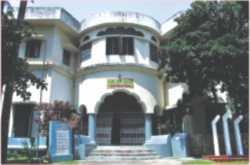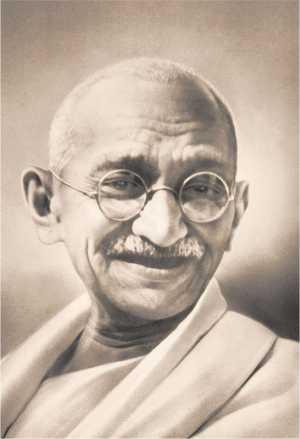In Retrospect
Resuscitation of a Gandhi Ashram
Ziauddin Choudhury
October 2 was Mahatma Gandhi's birthday—it is usually celebrated in solemnity in India and other parts of the world by people who admired this iconic figure's contribution to humanity. I am sure there has been a celebration of some sort on this occasion in Bangladesh, at least in Joyag, a remote village in Begumganj, Noakhali, where we have a centre that was originally created by a local philanthropist (Barrister Hemanta Ghose) in 1947. Barrister Ghose donated his entire property to Mahatma Gandhi as a Trust to run welfare activities when Gandhi visited Noakhali following the communal riots that tore the district in 1946. Gandhi stayed in Noakhali for four months visiting the affected areas and preaching his core message of non-violence among the fighting communities.
| |
 |
I came to know of the existence of the Ashram, however, through an official proclamation of the Gandhi Ashram Trust by the Government of Bangladesh in 1975. I was appointed as the Deputy Commissioner of Noakhali, when through a gazette notification, I found myself to be nominated as a member of the Trust. There were a few other officials and one local person who were members of the Trust with Justice Devesh Bhattacharya (father of economist Debapriya Bhattacharya) as the Chair. The local person was Charu Choudhury—the man who had been associated with the original Ashram since its birth.
I had been in Noakhali only a couple of months, and I had yet to know the unwritten code, no one was supposed to speak of any Ashram and that too named after Gandhi. The Gazette notification came as a surprise as I suddenly found myself to be a member of a Trust that was ostensibly created for a centre that I had no clue about.
As I was going about enquiring my staff about the location of Joyag and the whereabouts of the Ashram, I had a visit from Charu Choudhury. He was a slight man with a fair complexion, and appeared to be in his early seventies. We sat and we talked. It was a fascinating two-hour conversation.
Charu was a loyal disciple of Mahatma Gandhi. He came to Noakhali with Gandhi in the wake of his visit following the riots. I would hear from him the history of the Ashram, and how it had come to near ruination from years of neglect and abuses by anti-socials who were abetted by the local authorities. I would learn from him how he had steadfastly refused to leave the place or stop caring for the Ashram, despite its ruinous condition, loss of property, and his own incarceration by the Government of Pakistan from time to time. He told me that he dared not leave the place despite the threats on his life, because Gandhiji had asked him to stay there.
| |
 |
| |
Mahatma Gandhi, Image: Internet |
The following day, Charu Choudhury took me to Joyag to visit the Ashram, which was only about 15 or 20 miles away. It was a pitiable sight. A mildewed building, partly covered by moss stood at the center of what looked like a vegetable garden covered with shrubs. As I entered the building, I saw evidences of a leaky roof. There were the charkas, a weaving machine, and some other objects that appeared to be tools for making handicrafts. There were some women were working on some of the equipments. Charu Choudhury explained to me that local women came there regularly to learn weaving or spinning yarns. He was still operating a Center for the destitute, with almost no resources. Now that the Government has formed the Trust, funds would come, he hoped.
However, as days went by, Charu and I waited but the funds for the Asram didn't appear. Then, we decided to lay the foundation for the resuscitation of the centre with the funds of the district administration (including the Zilla Board).
The Gazette Notification from the Government was of great help to our venture. Charu, as the secretary of the Trust, was empowered to go to courts to recover lands that belonged to the Trust. With support from the Courts and law enforcing authorities, lands were recovered, and future transgressions were prevented.
It took several years for the Ashram to get back its life. It took continued hard work by Charu and dedicated support of his associates. Today, the Ashram is not only a training centre but also a museum dedicated to the memory of the great soul who cared more for his fellow beings than for himself.
I think it is a gift to our country and our nation that we have a place in our country where we can remember Mahatma Gandhi and his work for all human beings. The Gandhi Ashram in Joyag is also a quiet reminder to all that adversities in life can never deter true disciples of Gandhi like Charu from following his teachings. Never for a moment did Charu forget what Gandhi said– “You must not lose faith in humanity. Humanity is an ocean; if a few drops of the ocean are dirty, the ocean does not become dirty.”
Ziauddin Choudhury works for an international organisation in the USA. He was Deputy Commissioner of Noakhali from 1975-78.